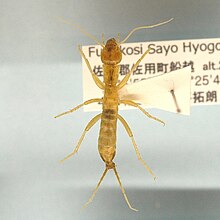Trehalose (from Turkish 'trehala' – a sugar derived from insect cocoons + -ose)[3] is a sugar consisting of two molecules of glucose. It is also known as mycose or tremalose. Some bacteria, fungi, plants and invertebrate animals synthesize it as a source of energy, and to survive freezing and lack of water.
Extracting trehalose was once a difficult and costly process, but around 2000, the Hayashibara company (Okayama, Japan) discovered an inexpensive extraction technology from starch.[4][5] Trehalose has high water retention capabilities, and is used in food, cosmetics and as a drug. A procedure developed in 2017 and using trehalose allows sperm storage at room temperatures.[6]
https://en.wikipedia.org/wiki/Trehalose

